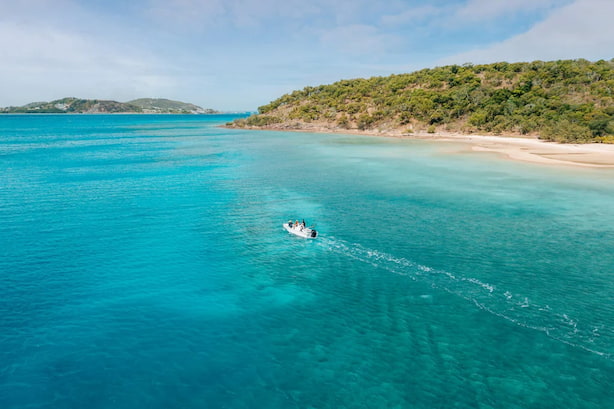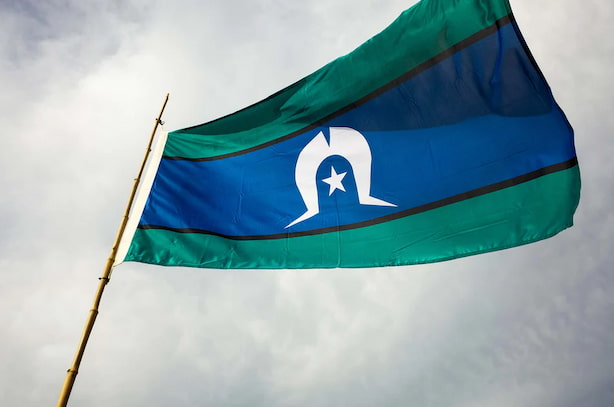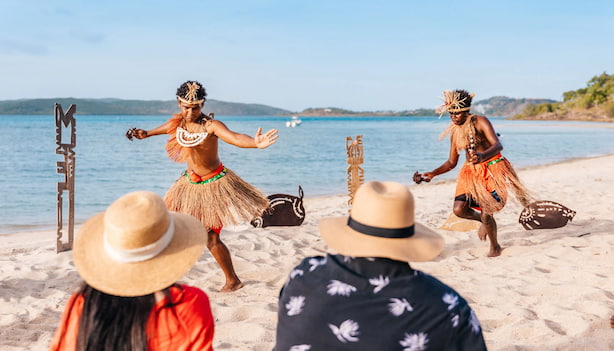The History and Culture of Torres Strait Islands
The Torres Strait consists of eighteen islands and two communities on the mainland, dispersed over 48,000 square kilometres, beginning at Cape York and extending north to the Papua New Guinea and Indonesian frontiers.
In their day-to-day living, the Islanders there are occupied with fishing, farming, hunting and fathering, and senior males govern their traditions and culture. Through familial lineages and totems, communities are divided into Clans.
Important for their governing hierarchy, traditional island divisions are divided between the Top Western, Western, Central, Eastern, and Inner Islands and two mainland-based communities.

Contents
The Islands’ Mythology
Tagai is the name of the Creator in the old as time myths of the Torres Strait Islander people. Recognised as a renowned fisherman, he and his crew of 12 were out on their canoe. They were unsuccessful in catching any fish, so Tagai departed the group to seek fish in a reef nearby.
Tagai had been gone from the group for quite some time, and as the day grew heated, the remaining twelve crew members grew weary and frustrated. They ultimately drained all of Tagai’s water after exhausting their own provisions.
When Tagai returned and saw that his supplies had been depleted, he became enraged and destroyed his entire crew of twelve. He dispatched six of the personnel to Usal (the Pleiades star cluster) and the remaining six to Utimal (Orion), where he instructed them to wait and never to disturb him again.
History of the Torres Strait Flag
The Torres Strait Islander flag was designed by Thursday Island’s late Uncle Bernard Namok. The flag represents all Torres Strait Islanders’ unity and identity. The flag is inscribed with a Torres Strait Islander symbol, a white Dhari (headdress).
The conspicuous feathered headdress (dhari) on the Torres Strait Islander flag is composed of a row of feathers affixed to an arched cane border. The feathers have been trimmed to resemble fishtails. A solitary black feather rests atop the dhari.
Contrary to popular belief, the dhari was not traditionally associated with tranquilly, but rather with warfare and tribal retribution. With the advent of missionaries, it was transformed into a ceremonial garment. Despite numerous artistic modifications, the dhari remains a potent and revered symbol of the Torres Strait Islands.

The white five-pointed star beneath it represents peace, the five main island groupings, and the nautical significance of stars for the island’s seafaring population. The green stripes of the Torres Strait islander flag represent the land, black stripes represent the inhabitants, and blue stripes represent the ocean.
Flag Day is celebrated every year on May 29, the anniversary of the flag’s official presentation to the Torres Strait people in 1992. And the Winds of Zenadth (Torres Strait Cultural Festival) is a four-day celebration of Islander culture held on Thursday Island every other September since 1987 where the Torres Strait Islander flags are again held up high everywhere.
Spoken Languages
Torres Strait Islander people are predominantly Melanesian and culturally most similar to the coastal peoples of Papua New Guinea. Consequently, they are regarded as distinct from the Aboriginal people of Australia and are generally considered separately, despite historical trade and intermarriage with Aboriginal people of the mainland. Bamaga and Seisia are two Torres Strait Islander communities located on the adjacent mainland coast.
On the islands, three languages are spoken. Western-Central Torres Strait Language (also known as Kalaw Lagaw Ya, Kalaw Kawaw Ya, Kulkalgau Ya, and Kaiwaligau Ya) and Eastern Torres Language Meriam Mir are indigenous languages.
Yumplatok is a contemporary Torres Strait Island language known as Torres Strait Creole and Broken. Since the 1800s, contact with missionaries, merchants, and other English speakers has resulted in forming a pidgin language. It evolved into a Creole language with its own sound system, grammar, vocabulary, and usage.
The majority of Torres Strait Islanders speak Torres Strait Creole, which is a combination of Standard Australian English and ancient indigenous languages. It is Creole based on English, but each island has its Creole dialect. Torres Strait Creole is also spoken in the Northern Peninsula Area Region and coastal areas such as Cairns, Townsville, Mackay, Rockhampton, and Brisbane.

Arts and Culture
On the Torres Strait Islands, the didjeridoo is not at all utilised, despite its widespread use on the Australian mainland. As musical instruments, islanders utilised rattles (or kulup) made from legumes or nuts, flutes and pan pipes from Papua New Guinea, and island percussion.
Historically, Torres Strait Island melodies were very brief, with some imported from other civilisations without knowledge of their meaning. Missionaries, anxious to eradicate traditional songs and dance, combined with the emergence of Polynesian music and novel instruments such as guitars and ukuleles, to produce a distinctive new island music with a rich combination of styles and contents.
Each island has its own distinct dance style. Typically, dances are performed in aisles with a pounding. The dancers wear grass skirts or lap-laps and distinctive hand-held masks, which frequently have moving elements (“dance machines”) depicting the subject matter of the performance. These may include aircraft models in World War II-themed routines.
In Kala Lagaw Ya, dance devices are called zamiyakal, while in Meraam Mer they are called Kab Teir. The dances, melodies, headdresses, and dance devices are essential ways for community members to transmit vital information about social structure and survival.






